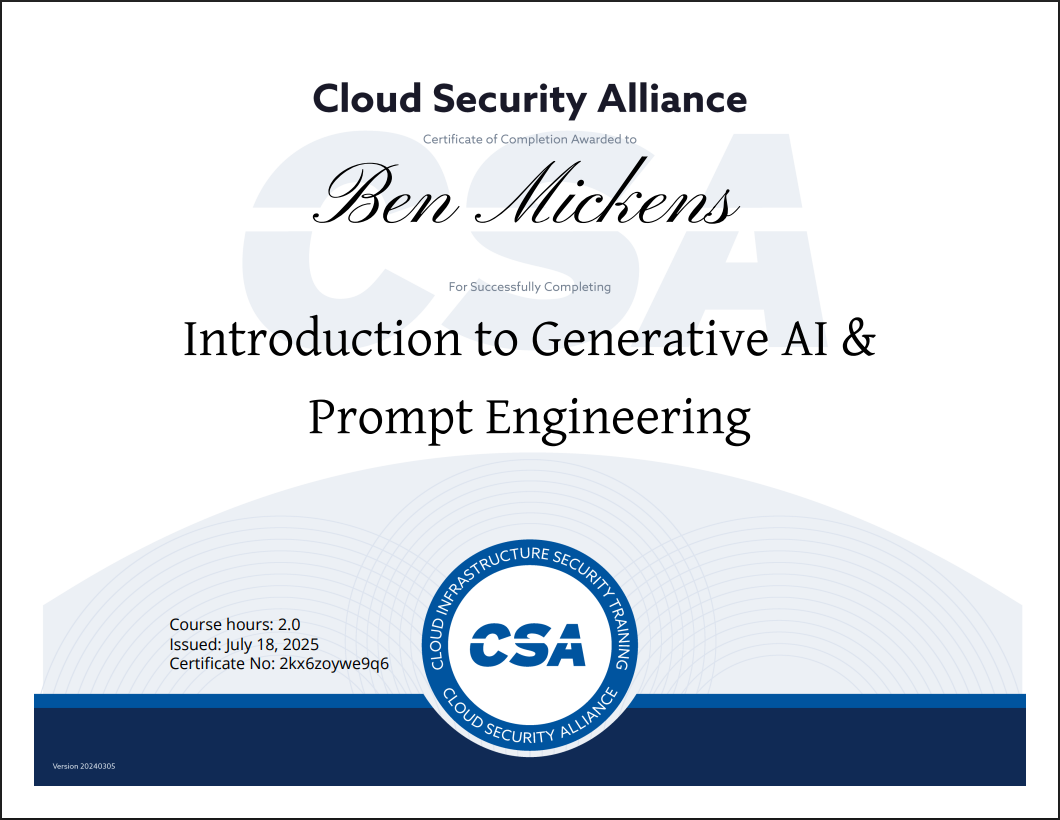Prompt Engineering and AI Safety: Reflections on the CSA Learning Path
As someone deeply invested in AI, cloud, and cybersecurity, I'm always looking for ways to strengthen my understanding of how emerging technologies work under the hood. I'm currently serving as a reviewer and beta tester for the Cloud Security Alliance’s upcoming Trusted AI Safety Knowledge (TAISK) certification, and that’s how I came across their Prompt Engineering Learning Path.
This short course, titled Introduction to Generative AI & Prompt Engineering, does a solid job of breaking down the fundamentals for anyone new to interacting with large language models.
What the Training Covered
Learners were introduced to:
-
The difference between discriminative vs. generative AI models
-
The capabilities and limitations of generative models like LLMs
-
The core components of large language models and how they are built
-
The fundamentals of prompt engineering, including structure, format, and intent
-
Examples of different prompt styles, as well as troubleshooting strategies for when prompts don't return the desired results
This wasn't a technical deep dive, but it laid out essential concepts for safely and effectively working with generative AI systems.
My Key Takeaways
-
Prompt engineering is part art and part science. You need structure, clarity, and intent to guide the model toward reliable outputs.
-
Understanding model architecture matters. Knowing how LLMs are assembled and trained gives you better insight into why certain prompts succeed or fail.
-
Troubleshooting is a critical skill. If a prompt isn’t working, it's often due to vague phrasing or missing context, not the model itself.
Why It Matters for Cloud Security and DevSecOps
In environments where AI tools are integrated into security workflows, DevOps pipelines, or GRC reporting, clear communication with LLMs is a must. Poorly designed prompts can cause misinterpretations, generate hallucinated outputs, or introduce subtle risks. As we move toward more AI-assisted operations, prompt engineering becomes part of the threat surface and the skillset needed to secure it.
What's Next
I'm continuing my work with the CSA's TAISK project, exploring how trust, safety, and alignment intersect with AI governance and cloud security. This learning path was a helpful reminder that technological literacy includes knowing how to talk to the tools we depend on.
If you're starting your journey into AI safety, prompt design, or secure system integration, I recommend giving this learning path a try. It’s a solid launchpad for the conversations we need to be having around responsible AI use.
